This is a super easy low-discard gluten-free sourdough starter recipe made with whole-grain millet flour! It is lectin-free as well. All you need is some flour, water, and a little bit of patience! After about 10 days you will be able to make a gorgeous gluten-free sourdough boule.
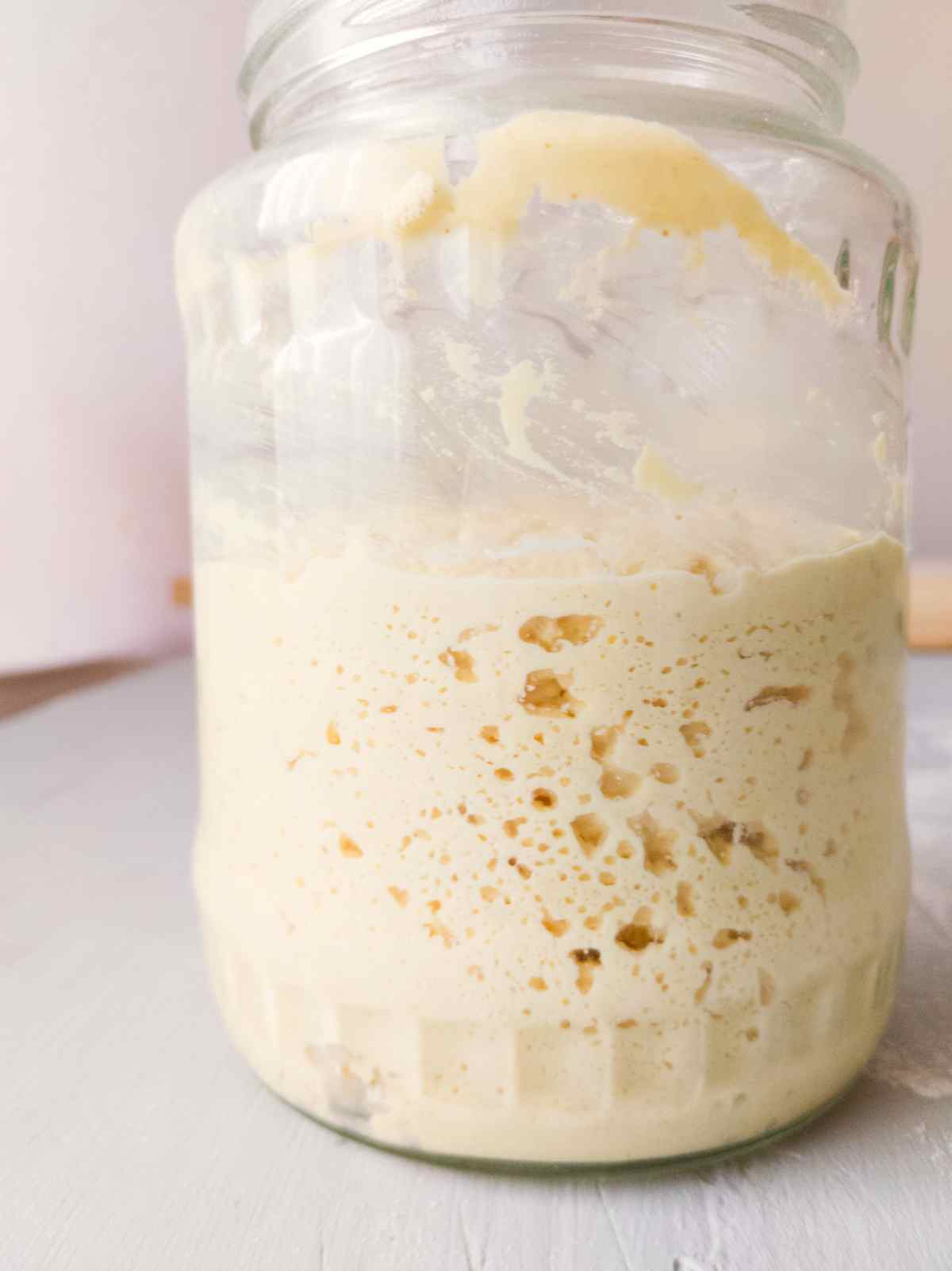
STOP making these 5 common GF sourdough mistakes!
Jump to:
What Is a Sourdough Starter?
Sourdough starter is wild yeast that we use to make bread. Gluten-intolerant people can't have regular sourdough so to make a gluten-free sourdough loaf we need to use a gluten-free sourdough starter.
To make a starter without gluten you can use a large variety of different gluten-free flours. For example, you can make a sourdough starter with brown rice flour, millet flour, teff flour, buckwheat, and even chickpea flour.
New to gluten-free sourdough? Watch my 16-minute video tutorial for beginners!
Is Millet Flour Gluten-Free?
Yes, millet flour is naturally a whole-grain gluten-free flour! You can use it to make my homemade rice-free flour blend which is great for making plenty of gluten-free recipes.
I especially like it in this gluten-free fermented challah, these fluffy gluten-free sourdough rolls, and these sourdough gluten-free cinnamon rolls.
You can also make 100% yeasted millet flour bread and millet sourdough bread which are both vegan and gluten-free!
Ingredients
Millet flour - you can buy it in a grocery store, order it online, or make it at home. Millet flour is made from millet seeds which can be easily ground at home by using a blender and a sieve.
Water - use room temperature water for the best results. To always have some room-temperature water on hand, get a glass bottle with a lid and pour some water in it. Leave the bottle on the kitchen counter and use the water whenever needed!
Step-By-Step Instructions
Day 1
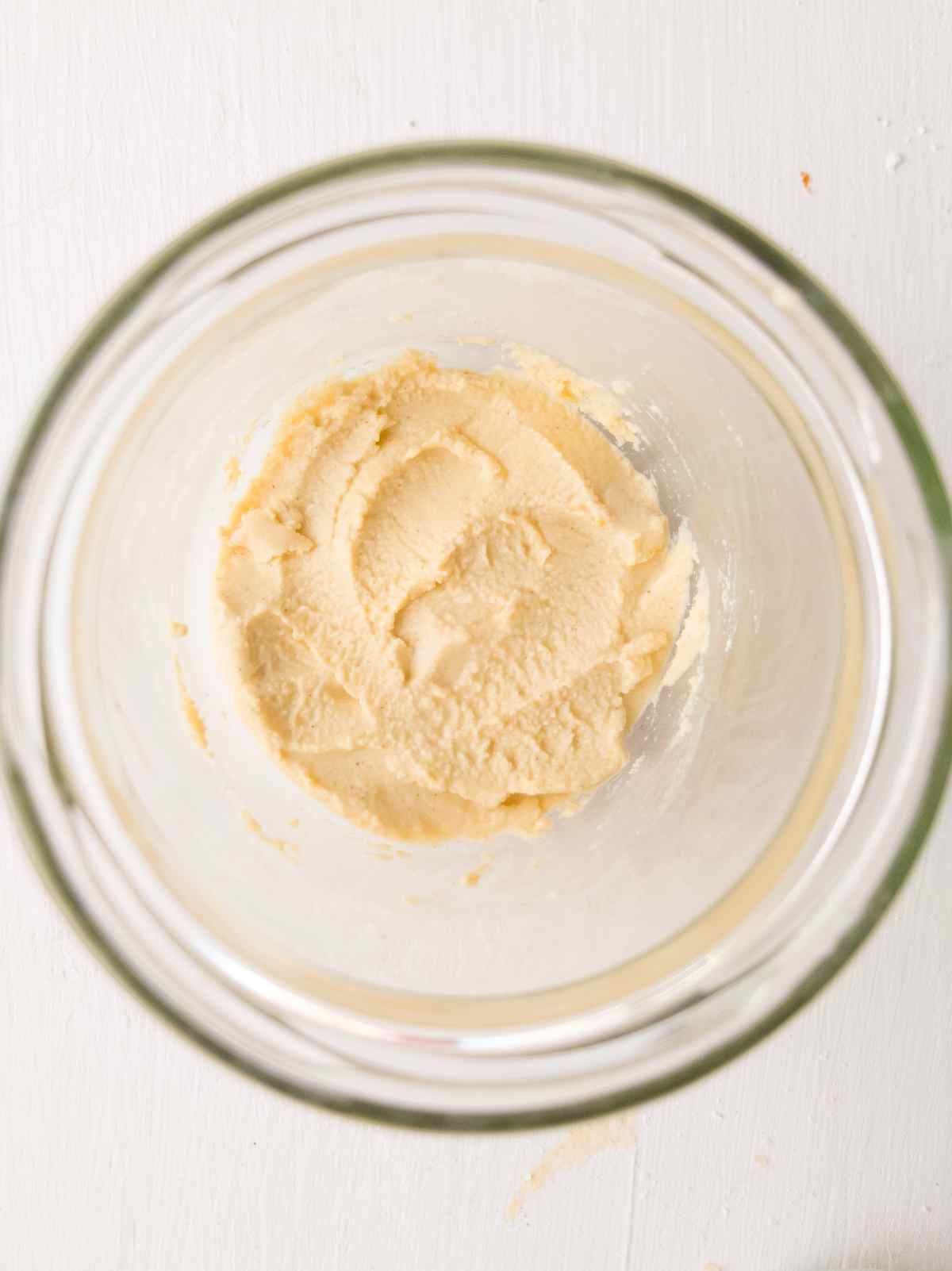
In a clean glass jar mix 20 grams of millet flour and 20 grams of water (the mixture should look like a thick paste). Stir well and slightly scrape the walls of the jar to not leave much starter left on the jar walls. Cover the jar with cheesecloth or with a lid (loosely). Let the mixture sit for 24 hours.
Day 2
Check your starter for activity. If it has bubbles that means bacteria started doing its job! In that case, proceed to the next step.
If you don't see bubbles at all, stir the starter once again without adding anything and leave for another 24 hours.
Day 3
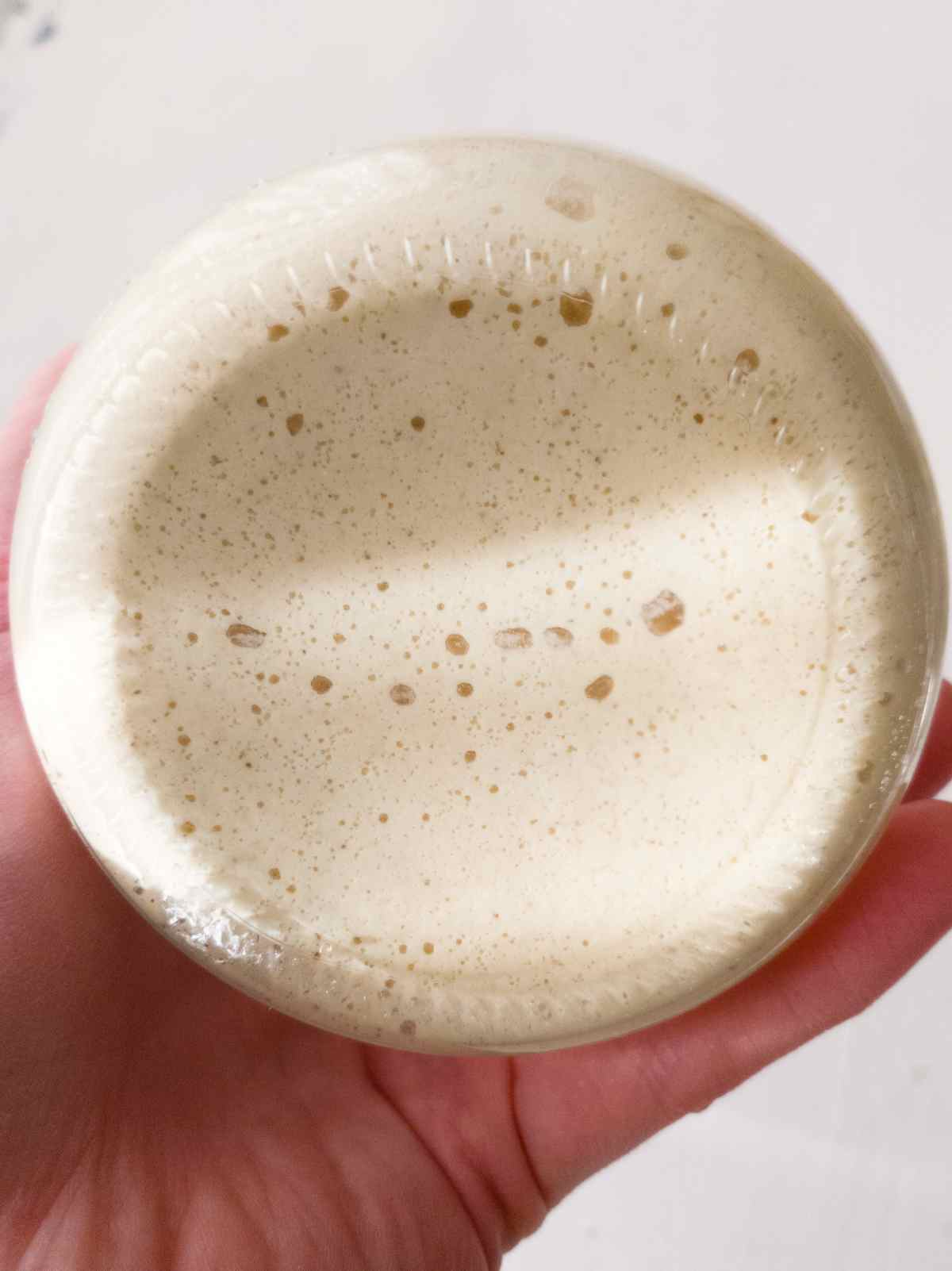
By now you should see little air pockets in the starter (this is why it is important to use a glass jar). This means that bacteria are activated and they are ready for a new feeding. Take about half of the starter and place it into another clean glass jar. This will be your discard jar you can keep in the refrigerator and use the discard later in recipes.
Now, add 20 grams of millet flour and 20 grams (or more) of water to the remaining starter, stir well, cover it with a lid or cheesecloth, and leave the mixture to ferment for 24 hours.
Day 4-14
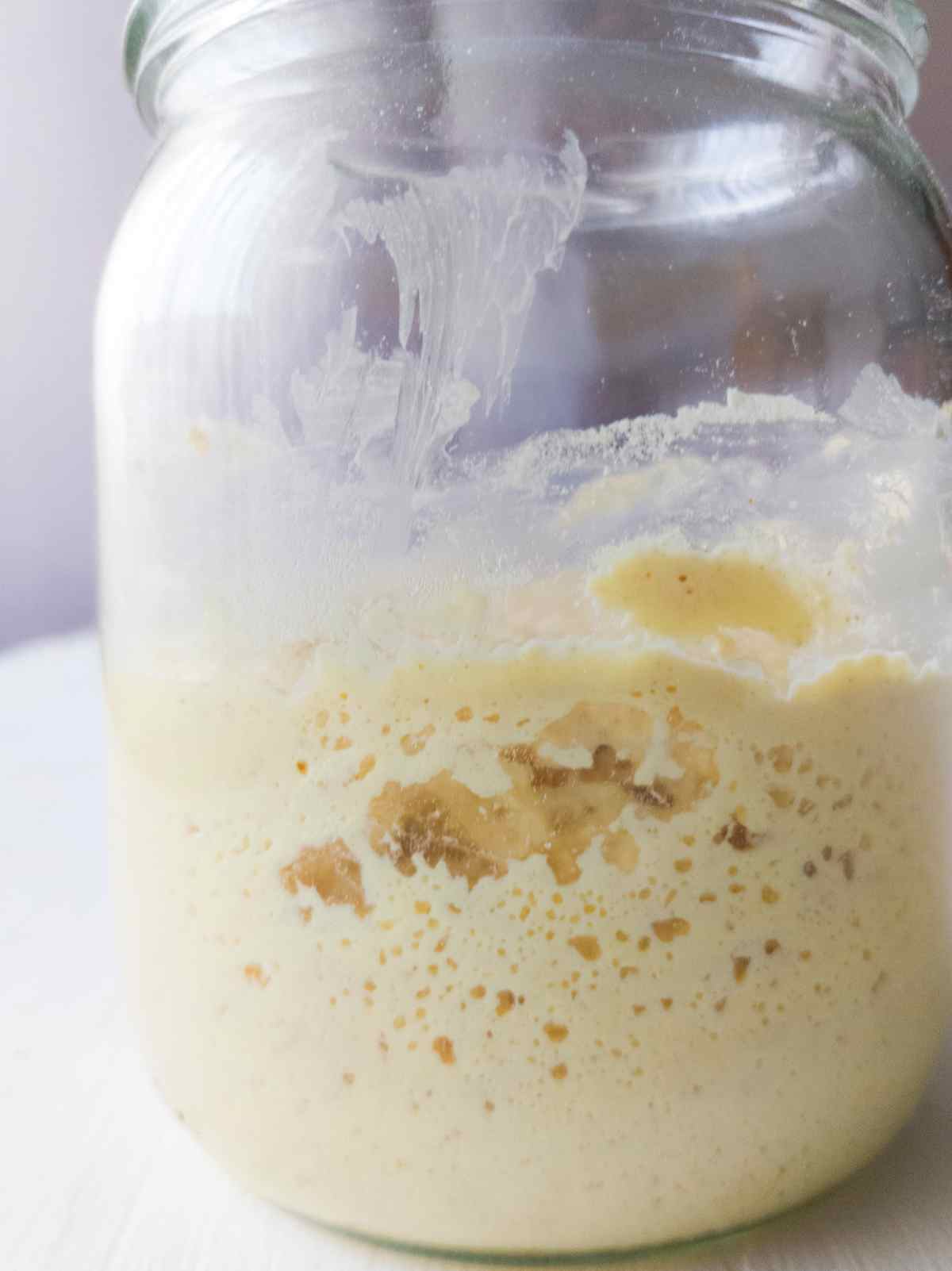
From now on you will need to continue discarding half of your starter and adding 20 grams of millet flour and 20 grams of room-temperature water daily. To give an extra boost to your millet starter you can start discarding and feeding it twice a day in the morning and in the evening.
To give an even stronger boost, you can add a teaspoon of honey or sugar to it but don't do it every day. Adding a sweetener once is enough!
How Do I Know When My Starter Is Ready for Baking?
If your starter is at least one week old, is showing activity (air pockets/bubbles), and rises by at least half its height, you can bake gluten-free sourdough bread with it!
Be careful not to bake with a 1-2 day-old starter even if it shows a lot of activity. In the beginning, starters do very well and then bacteria dies down for a day or two. Then, it grows its strength back. That is when you want to start baking bread!
How Do I Know If My Starter Went Bad?
If you see mold on the top of the starter then it went bad. If your starter smells like vinegar or has another sort of strange smell, don't get worried! It is normal for a starter to smell like that.
You might also see discolored starter on the walls of the glass jar if you didn't scrape the sides after feeding it. If you see such discoloration, make sure to use a clean jar the next time you feed the starter.
Storage
Refrigerator
Once your starter is strong (after at least 10 days of regular feedings) you can place it in the fridge and feed it 1-2 times a week. Take the starter out preferably one day before baking with it. Feed it and the next day you can bake with it.
If you are traveling and have to leave your starter at home for a couple of weeks, you can safely leave it in the fridge without feedings. When you come back, spend a few days feeding/discarding the starter to bring its strength back.
Freezer
A freezer is an option if you need to leave your starter for at least one month or even longer. You can freeze a gluten-free sourdough starter but it will take longer for it to revive than if you were keeping it in the fridge. So, if you only leaving for 2-3 weeks I would recommend refrigerating the starter or dehydrating it.
Dehydrating
Finally, the safest way to keep a starter alive for a long time if you are not going to bake with it is to dehydrate it. To do so, you simply need to spread some starter on a piece of parchment paper in a thin layer. Let the starter dry out for a day or two and then transfer it to a glass jar. Cover it with a lid and keep it at room temperature until ready to use.
To rehydrate a starter, simply add the dried starter and water to a glass jar, stir, and let the water get absorbed. Then, feed/discard the starter for a few days until it shows activity again!
Expert Tips
- Don't get discouraged if your starter stops showing activity after day 2. It is totally normal and it will come back to life. Keep feeding and discarding it!
- You can add other gluten-free flours to your millet starter once it is established. Keep in mind that the best gluten-free flours for starters are sorghum, buckwheat, chickpea, brown rice, teff, and millet.
- It is normal for a starter to smell like vinegar or have another type of strange smell. Don't throw away a starter based on smell alone. Your starter only needs to be thrown out if it is covered in mold!
Recipes to Make with This Starter
First of all, the reason you even started on this journey is that you want to make gluten-free vegan sourdough bread. If you have easy access to buckwheat flour, I strongly recommend checking out this recipe for buckwheat sourdough.
If you want to try something new, try making this delicious gluten-free French bread! Or these sourdough soft pretzels. If you are into gluten-free bagels, I've got you covered!
For starch-free bread, check out my millet sourdough, sorghum sourdough, and this brown rice sourdough recipe.
FAQ
You can make any gluten-free sourdough bread using your millet sourdough starter. You can make brown rice sourdough bread, buckwheat sourdough bread, or any other type of bread with it! The recipe doesn't need to contain millet flour.
Millet flour might taste bitter if you use a lot of it. If your baked goods taste bitter, try reducing the amount of millet flour next time!
Yes, this sourdough starter is lectin-free.
Gluten-free sourdough bread recipes you might like!
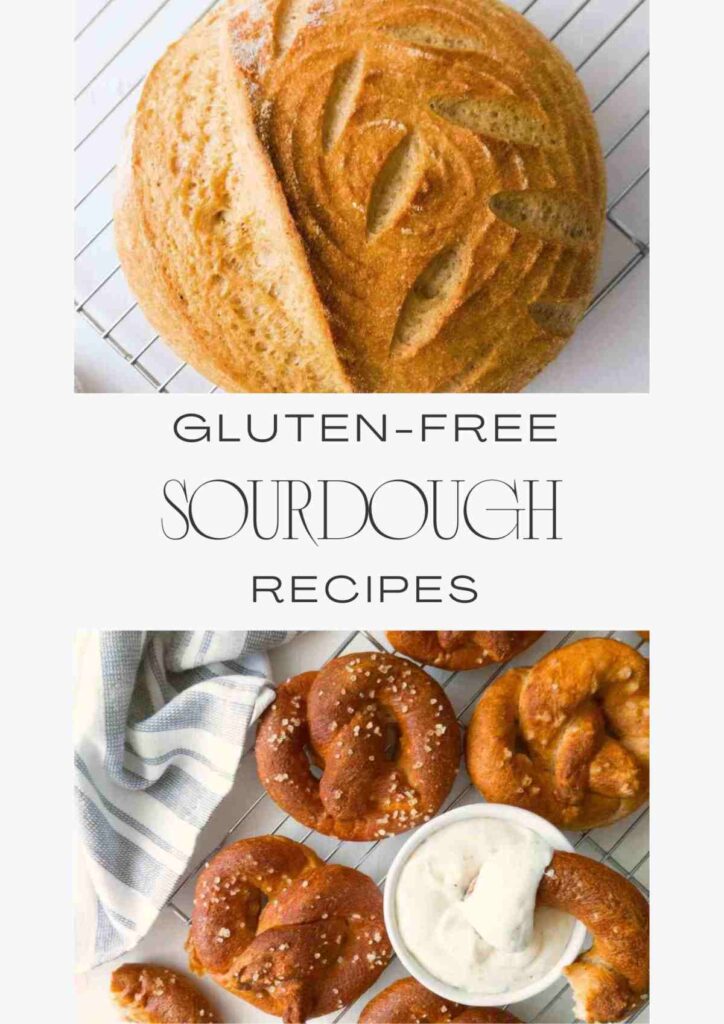
Get my GF sourdough recipes eBook
The top 16 recipes of 2024!
📖 Recipe
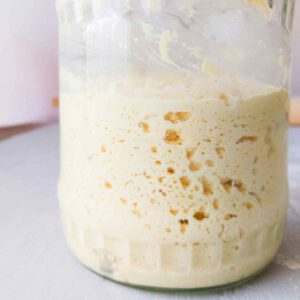
Millet Flour Sourdough Starter
Ingredients
- 1 lb millet flour the exact amount depends on the number of days you will be feeding it.
- 1 lb water room-temperature
- 1 teaspoon honey/maple syrup/sugar optional
Instructions
Day 1
- In a clean glass jar mix 20 grams of millet flour and 20 grams of water (the mixture should look like a thick paste) . Stir well and slightly scrape the walls of the jar to not leave much starter left on the jar walls. Cover the jar with cheesecloth or with a lid (loosely). Let the mixture sit for 24 hours.
Day 2
- Check your starter for activity. If it has bubbles that means bacteria started doing its job! In that case, proceed to the next step. If you don't see bubbles at all, stir the starter once again without adding anything and leave for another 24 hours.
Day 3
- By now you should see little air pockets in the starter (this is why it is important to use a glass jar). This means that bacteria are activated and they are ready for a new feeding. Take about half of the starter and place it into another clean glass jar. This will be your discard jar you can keep in the refrigerator and use the discard later in recipes. Now, add 20 grams of millet flour and 20 grams of water to the remaining starter, stir well, cover it with a lid or cheesecloth, and leave the mixture to ferment for 24 hours.
Day 4-14
- From now on you will need to continue discarding half of your starter and adding 20 grams of millet flour and 20 grams (or more) of room-temperature water daily. To give an extra boost to your millet starter you can start discarding and feeding it twice a day in the morning and in the evening. To give an even stronger boost, you can add a teaspoon of honey or sugar to it but don't do it every day. Adding a sweetener once is enough!

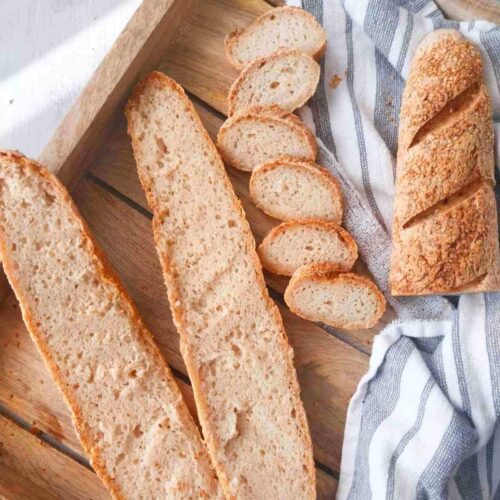
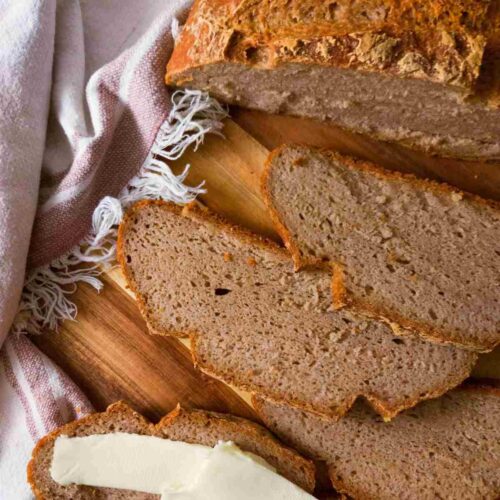
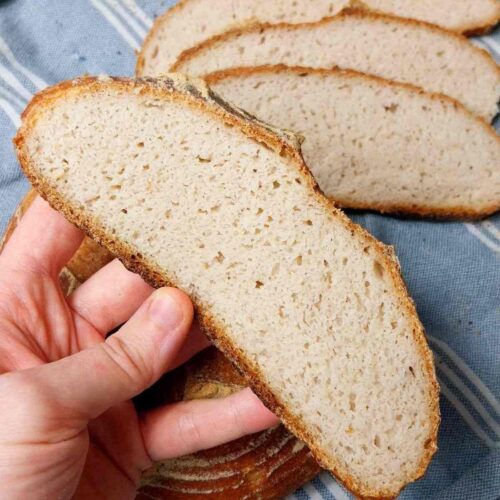
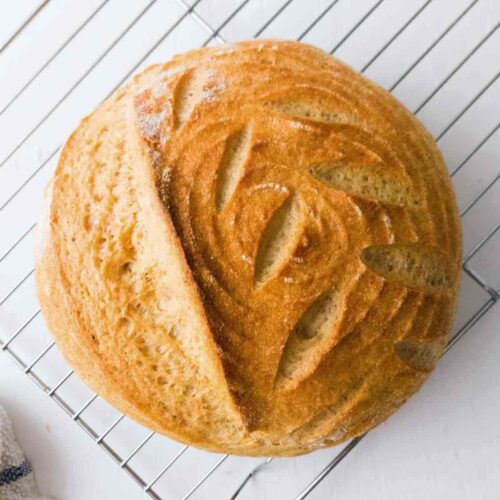

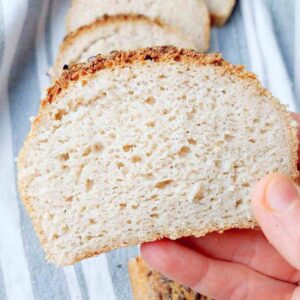
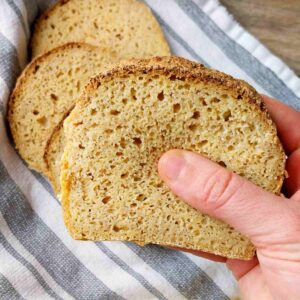
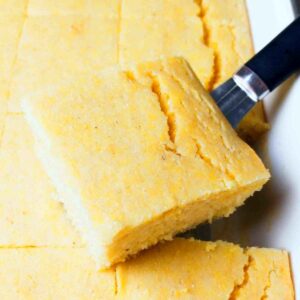
Madeline
Im giving this a go as we speak! Question, how long is the discard starter jar good for in the fridge? I'm assuming I wouldn't have to use it daily.
Natasha Levai
It is good for as long as it doesn't get moldy! Generally, my starter can last for up to a month. 🙂
Kathy Watkins
Hello
More of a question than a comment. If I have Whey can I use that in place of the initial
1 lb. of room temperature water?
Natasha Levai
Hi Kathy! I have not tried it, but I know whey is good for adding it to bread. So, I would guess that it might help your starter if you use part water, part whey, and I am not sure about using 100% whey but it might work!
Marilyn Olson Neville
I have tried for two weeks to get a good millet sour dough starter going. Warm room with a wood stove, and even offered honey to a feeding.
Never had a double rise.
I feel stupid but when dumping half a feeding, then adding 2 gram flour and 2 gram well water room temp, I get NO or very little rising. Also I have so little dough to work with by dumping out half each feeding
Less dough than I can use in your bread recipe and have enough left to keep the dough going.
Other starter recipes don't toss half, but feed the starter.
You don't do that to save the flour amount used or why?